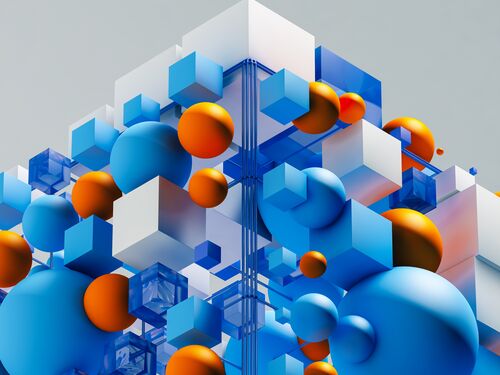Deficient Facilities Adversely Affect National Institute of Standards and Technology's Mission, With Economic, National Security, and Safety Impacts, Says New Report
News Release
By Josh Blatt
Last update February 7, 2023
WASHINGTON ― The National Institute of Standards and Technology’s facilities are well overdue for modernization, and their condition is adversely impacting NIST’s critical missions, according to a new report from the National Academies of Sciences, Engineering, and Medicine. The report recommends modernizing and sustainably managing NIST facilities moving forward, to ensure that the agency can continue to deliver measurement science and standards that advance U.S. innovation and competitiveness on national technology priorities, and to meet the requirements of companies and other agencies that rely on NIST’s specialized services and capabilities.
An agency within the U.S. Department of Commerce, NIST’s mission is to promote U.S. innovation and industrial competitiveness through measurement science, standards, and technology. Among its regular activities, for example, NIST time-stamps digital financial transactions and billions of other actions on the internet each day; creates tens of thousands of standard reference materials yearly for labs, hospitals, and manufacturers; and provides calibration services, such as those that ensure the accuracy of radiation treatments and the smooth functioning of fiber optic communications.
The increasing demands of precision measurement and the science needed to carry out NIST’s mission have outpaced the capabilities of its facilities, many of which date from the 1950s and 1960s, according to the report. Getting accurate measurements requires laboratory facilities that meet a wide range of requirements, including extremely precise environmental controls for temperature, humidity, vibration, sound, and cleanliness, and often more demanding requirements like electromagnetic shielding.
In total, 63% of the research facilities and 69% of the nonresearch facilities at the Gaithersburg, Maryland, and Boulder, Colorado, campuses fail to meet the Commerce Department’s established standards for acceptable building condition, the report states. Issues in unrenovated areas range from unreliable power and climate control to leaking roofs and instrument and lab damage from plumbing leaks.
Adverse Impacts
The report says that technical staff at NIST have had to devote increasing efforts toward workarounds and do-it-yourself repairs, reducing productivity by 10% to 40%. For example, researchers in one electron microscopy lab reported spending 30% of their time cleaning the lab and shielding samples from airborne particulates spread by a decades-old HVAC. Power outages alone at the Boulder campus resulted in the loss of tens of thousands of researcher hours between August 2019 and April 2020, and some electrical equipment lacks modern safety features to protect technicians. In an increasingly competitive STEM environment, NIST’s substandard facilities are a growing impediment to attracting and retaining talented staff.
Poor facility conditions have also caused significant delays that NIST staff has had to overcome, according to the report. An unrenovated lab caused an estimated 18-month delay for one team, which after relocating to a better facility was able to win the Physics World 2021 Breakthrough of the Year prize for its demonstration on the quantum entanglement of microresonators. A lack of humidity and dust controls in another unrenovated lab caused repeated delays on the delivery of radiation sensors with homeland security applications, which staff fixed through the installation of home humidifiers.
Deteriorated conditions have produced other notable adverse impacts on NIST’s work, including:
- Each year between October and March, low humidity in one lab creates a static charge that renders inoperable an instrument used to ensure companies can stay in compliance with EPA standards for greenhouse gases and emissions.
- NIST has been unable to meet typical demand for some of its standard reference materials, including for infant formula, due to problems with its HVAC and specialized lights.
- Leaks and floods destroyed an electron microscope used to support semiconductor research, caused NIST to abandon a basement lab that supported quantum computing research, and permanently damaged a specialized Kibble balance that helped redefine measurements of mass in 2019.
- Intermittent power outages at the Boulder campus often cause data loss and require substantial efforts to restore needed experimental conditions. Staff have reported spending the night in a lab during inclement weather to avoid losing weeks of work to an unexpected loss of power.
- Power instabilities can damage instruments, with a state-of-the-art micro/nano fabrication facility in Boulder losing one instrument, on average, with each outage. A $6 million electron microscope in another lab that supported additive manufacturing research suffered irreparable damage from power outages.
- An export-controlled instrument that is among the most accurate in the world, providing measurements to companies in the semiconductor and aerospace industries, cannot be calibrated about 20% of the time due to lack of humidity controls in the lab.
- Distribution lines that carry steam and potable water from the Gaithersburg campus’ central utility plant are corroding, which has led to floods in buildings, the shutdown of sections of the campus transportation system due to road damage, and leakage of chemically treated steam into a local water source.
- Each year between October and March, low humidity in one lab creates a static charge that renders inoperable an instrument used to ensure companies can stay in compliance with EPA standards for greenhouse gases and emissions.
- NIST has been unable to meet typical demand for some of its standard reference materials, including for infant formula, due to problems with its HVAC and specialized lights.
- Leaks and floods destroyed an electron microscope used to support semiconductor research, caused NIST to abandon a basement lab that supported quantum computing research, and permanently damaged a specialized Kibble balance that helped redefine measurements of mass in 2019.
- Intermittent power outages at the Boulder campus often cause data loss and require substantial efforts to restore needed experimental conditions. Staff have reported spending the night in a lab during inclement weather to avoid losing weeks of work to an unexpected loss of power.
- Power instabilities can damage instruments, with a state-of-the-art micro/nano fabrication facility in Boulder losing one instrument, on average, with each outage. A $6 million electron microscope in another lab that supported additive manufacturing research suffered irreparable damage from power outages.
- An export-controlled instrument that is among the most accurate in the world, providing measurements to companies in the semiconductor and aerospace industries, cannot be calibrated about 20% of the time due to lack of humidity controls in the lab.
- Distribution lines that carry steam and potable water from the Gaithersburg campus’ central utility plant are corroding, which has led to floods in buildings, the shutdown of sections of the campus transportation system due to road damage, and leakage of chemically treated steam into a local water source.
The report endorses NIST’s draft infrastructure plan to begin restoring and modernizing existing labs, offices, and utilities infrastructure, but notes that it will require further refinement over time. The plan would require Congress to provide $300 million to $400 million in additional yearly funding over the next 12 years, to overcome a backlog of issues produced by historical underinvestment, and to bring existing facilities up to needed standards through construction and major renovations. Additional funding of $120 million to $150 million per year for the same period is needed to arrest and stabilize the effects of further deterioration and obsolescence.
“NIST has a record of providing extraordinary value to the nation’s economy, health, industry, national security, and scientific enterprise ― its work has led to five Nobel Prizes ― but it is unlikely that this track record of excellence can continue within NIST’s deteriorating facilities,” said Ross Corotis, chair of the committee that wrote the report and Denver Business Challenge Professor of Engineering emeritus at the University of Colorado, Boulder. “A sizable investment in recovery of NIST’s facilities and capabilities is essential if it is to maintain its critical and unique role in the innovation ecosystem, and help the nation face current and coming challenges.”
NIST’s Role
Measurements and standards provided by NIST have become more pervasive across a range of industries, and its advanced measurement capabilities and technical leadership give U.S. companies a competitive advantage in the global economy, the report says. Past investments in the agency’s programs have provided a median 9 to 1 return to the U.S. economy, according to assessments reviewed by the committee.
The report notes that NIST has been delegated significant aspects of the CHIPS and Science Act of 2022, and the Commerce Department has assigned NIST the lead role in tasks such as advancing U.S. leadership in semiconductors; increasing the resilience and diversity of critical domestic supply chains; developing and disseminating cybersecurity standards; and promoting research, applications, and standards for emerging technologies in quantum computing, artificial intelligence, and biotechnology.
The study, undertaken by the Committee on Technical Assessment of the Capital Facility Needs of the National Institute of Standards and Technology, was sponsored by the National Institute of Standards and Technology. The National Academies of Sciences, Engineering, and Medicine are private, nonprofit institutions that provide independent, objective analysis and advice to the nation to solve complex problems and inform public policy decisions related to science, technology, and medicine. They operate under an 1863 congressional charter to the National Academy of Sciences, signed by President Lincoln.
Contact:
Josh Blatt, Media Officer
Office of News and Public Information
202-334-2138; e-mail news@nas.edu
Featured Publication
Technical Assessment of the Capital Facility Needs of the National Institute of Standards and Technology
Consensus
·2023
The National Institute of Standards and Technology (NIST) provides critical impact to the nation through standards development and cutting-edge research, with a mission to promote U.S. innovation and industrial competitiveness by advancing measurement science, standards, and technology in ways that...
View details


